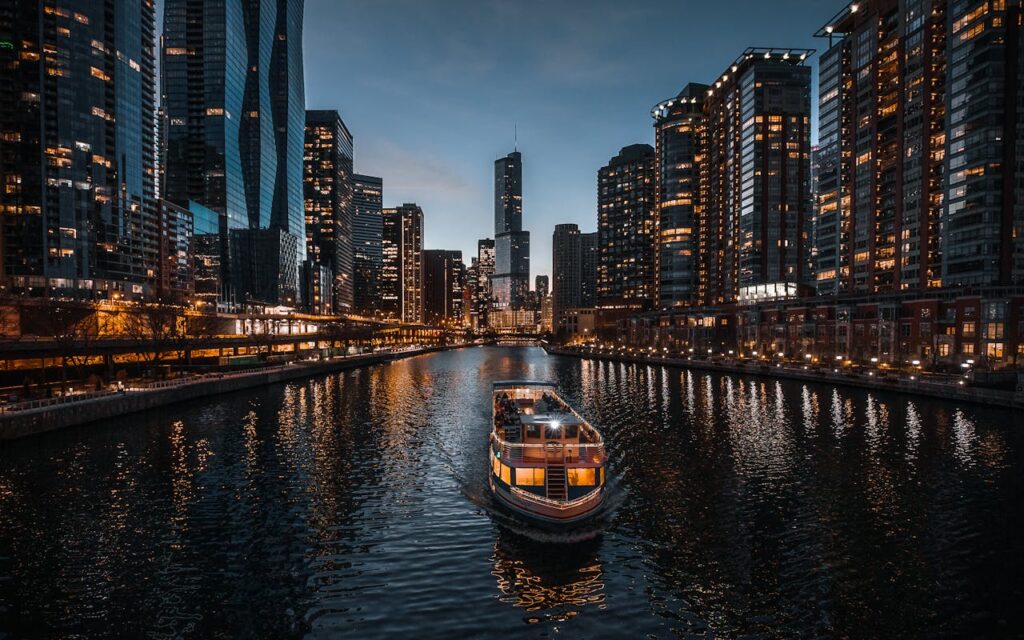
Public Transportation in the USA
Public transportation in the USA is a vital component of urban infrastructure, facilitating mobility for residents and visitors alike. It encompasses a variety of modes, including buses, trains, subways, and other forms of transit, providing essential links between neighborhoods, city centers, and suburban areas. Below, we delve into the various types of public transportation available, how they operate, and tips for effectively navigating these systems.
1. City Public Transit Systems
1.1 Buses
Overview:
Buses serve as the backbone of public transportation in many cities. They are typically managed by local transit authorities and provide extensive coverage, reaching areas that may not be accessible by rail.
Examples:
- New York City: The MTA operates an extensive bus network with over 200 routes, connecting all five boroughs. Buses run frequently, especially in busy areas, and offer a reliable way to travel through the city.
- Los Angeles: The LA Metro bus system has over 200 lines, including rapid buses that stop less frequently and cover longer distances quickly.
- Chicago: The Chicago Transit Authority (CTA) operates a comprehensive bus network, complementing its “L” train service. With over 100 routes, CTA buses connect neighborhoods and provide access to major attractions.
Payment Systems:
Buses generally accept various payment methods, including cash, but many cities have transitioned to electronic payment systems:
- Ventra Card (Chicago) and MetroCard (New York City) allow for seamless fare payments across multiple transit modes.
- Mobile payment options are also increasingly available, letting users pay through apps on their smartphones.
Service Frequency:
Bus frequency can vary by time of day. During peak hours, buses may run every 5-10 minutes, while off-peak times may see longer intervals. Major routes often have more frequent service, catering to commuters.
1.2 Trains and Subways
Overview:
Many cities have established train and subway systems to alleviate congestion and provide faster transit options through densely populated areas. These systems often serve as a core component of urban public transportation.
Examples:
- New York City Subway: One of the largest and busiest subway systems in the world, it has 472 stations and serves 24 hours a day, providing comprehensive coverage throughout the city.
- Chicago’s “L” System: The Chicago Transit Authority operates the “L” trains, featuring several lines identified by color. The system is integral for both daily commuters and tourists, offering direct routes to popular destinations.
- San Francisco BART: The Bay Area Rapid Transit system connects San Francisco with nearby cities, including Oakland and Berkeley. BART trains are known for their speed and efficiency, serving as a crucial link across the San Francisco Bay.
Fares and Tickets:
Fares for trains and subways typically match those of local buses, often ranging from $2.50 to $3.00 per ride in major cities. Many systems offer unlimited ride passes for various durations (1-day, 7-day, or monthly) that can provide savings for frequent users.
Service Frequency:
Train services usually run frequently during peak commuting hours, with some lines offering service every 2-5 minutes. Off-peak services may reduce frequency but generally maintain a reliable schedule.
2. Regional Transit Systems
2.1 Commuter Trains
Overview:
Commuter trains provide essential services linking suburban areas to major urban centers. They are ideal for those who live outside the city but work or study in urban areas.
Examples:
- Metra (Chicago): Metra operates multiple lines connecting Chicago with suburbs, making it a popular choice for commuters. The system is known for its punctuality and covers a vast area, allowing easy access to the city from various regions.
- Caltrain (San Francisco): This commuter rail service connects San Francisco with the Peninsula and Silicon Valley, providing a critical transit option for tech workers and residents.
- Long Island Rail Road (LIRR): Serving New York City and Long Island, the LIRR is one of the busiest commuter rail systems in the country, offering frequent service and numerous connections.
Fares and Tickets:
Fares on commuter trains are typically zone-based, meaning prices vary depending on the distance traveled. Monthly and weekly passes are popular among regular commuters, offering cost savings for frequent travelers.
Service Frequency:
Commuter trains tend to operate more frequently during morning and evening rush hours, with reduced service on weekends and holidays.
2.2 Intercity Buses
Overview:
Intercity bus services provide an affordable way to travel between cities and regions. They are often less expensive than train or air travel and reach areas not serviced by rail.
Examples:
- Greyhound: As one of the largest intercity bus companies in the USA, Greyhound connects cities nationwide, offering various amenities like Wi-Fi and power outlets on many routes.
- Megabus: Known for its low fares, Megabus operates routes between major cities with comfortable double-decker buses, providing an economical option for travelers.
- FlixBus: A newer player in the intercity bus market, FlixBus offers competitive fares and has rapidly expanded across the USA.
Payment and Booking:
Tickets for intercity buses can be purchased online, at bus stations, or through mobile apps. Many companies offer discounts for booking in advance or traveling during off-peak times.
Service Frequency:
Bus schedules vary, with more frequent service on popular routes. Some companies operate overnight buses, providing a cost-effective way to travel long distances while saving on accommodation.
3. Long-Distance Travel
3.1 Amtrak
Overview:
Amtrak is the national rail service in the USA, providing long-distance train travel between major cities and regions. It’s an excellent choice for those seeking a unique travel experience with scenic views.
Routes:
- California Zephyr: This route travels between Chicago and San Francisco, offering stunning views of the Rocky Mountains and Sierra Nevada.
- Empire Builder: Connecting Chicago to the Pacific Northwest, this route features breathtaking landscapes of the northern plains and the Great Lakes.
- Crescent: Running between New Orleans and New York City, the Crescent route takes passengers through the beautiful Southern countryside and along the eastern seaboard.
Travel Experience:
Amtrak trains provide various amenities, including comfortable seating, dining cars, and sleeper cabins for overnight trips. Passengers can enjoy scenic views through large windows, making train travel a memorable experience.
Booking and Fares:
Booking can be done online, via mobile apps, or at train stations. Fares vary based on distance and travel class, and discounts may be available for seniors, students, and military personnel.
4. Local Options
4.1 Bike Share Programs
Overview:
Many cities have implemented bike-sharing systems, providing residents and visitors with convenient access to bicycles for short-term use. These programs promote eco-friendly transportation and encourage exploration of urban areas.
Examples:
- Divvy Bikes (Chicago): This bike-sharing program offers thousands of bikes across hundreds of docking stations, allowing users to rent bikes for short trips around the city.
- Citi Bike (New York City): With a vast network of bikes and stations, Citi Bike is a popular option for locals and tourists alike, offering flexibility and ease of travel.
Pricing:
Bike share programs typically operate on a pay-per-ride basis or offer subscription plans for regular users. Pricing can vary by location but is generally affordable.
4.2 Ridesharing Services
Overview:
Ridesharing platforms like Uber and Lyft have transformed urban transportation, providing convenient and flexible options for getting around. These services are especially useful for trips to areas not easily accessible by public transit.
Availability:
Ridesharing services operate 24/7, making them a reliable choice for late-night travel, airport transfers, or when public transit may be limited.
Cost:
While ridesharing can be more expensive than public transit, it offers the convenience of door-to-door service. Many riders use these services when traveling in groups to share costs.
5. Considerations for Using Public Transportation
Accessibility: Public transportation systems are increasingly working to improve accessibility for individuals with disabilities. However, the level of accessibility can vary widely between cities.
Safety and Security: While public transportation is generally safe, it’s wise to stay aware of your surroundings, especially in crowded areas or late at night. Using mobile apps to track your route can enhance your safety.
Planning Your Trip: Many cities offer online trip planners that provide real-time information about schedules, routes, and connections. Using these tools can help you navigate unfamiliar transit systems effectively.
Etiquette: Familiarize yourself with local transit etiquette, such as giving up your seat for those in need, keeping noise to a minimum, and following any rules regarding food and beverages on public transport.
Conclusion
Public transportation in the USA offers a wide range of options for getting around urban areas and traveling between cities. From buses and subways to trains and ridesharing services, there are numerous ways to navigate the diverse landscapes and vibrant cities across the country. Understanding the different modes of public transit, how they operate, and the tips for effective use can significantly enhance your travel experience. Whether you’re a local resident or a visitor, utilizing public transportation can be an economical and efficient
